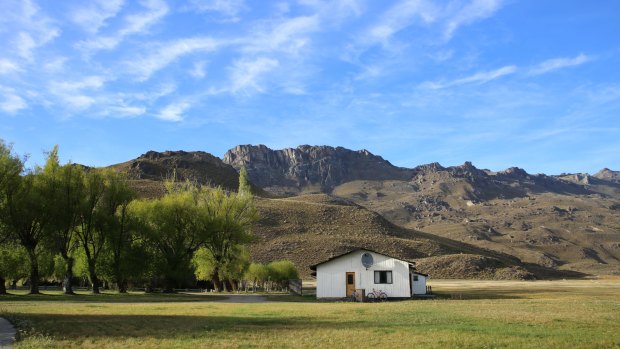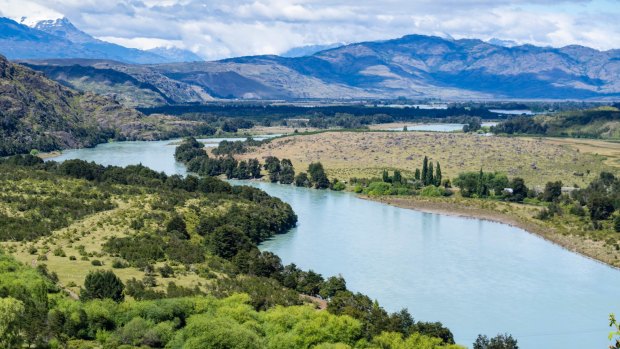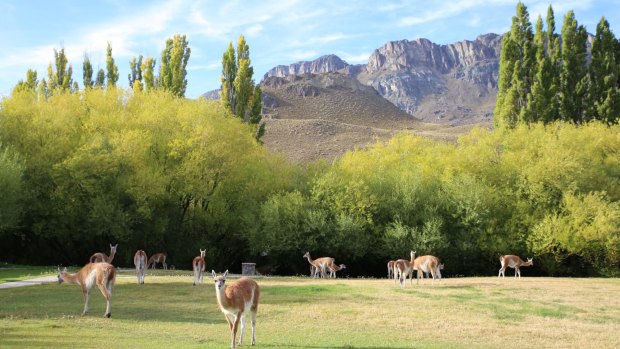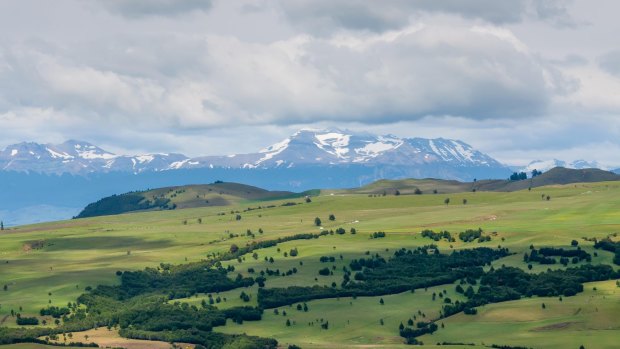This was published 6 years ago
Patagonia, Chile: Superb hiking and wildlife in Chile's new national park

Workers cottage, Parque PatagoniaCredit: Ben Groundwater
Seven hundred and twenty-five kilometres of fencing doesn't sound like that much, until you have to pull it all down. Until you have to roll up 725km of barbed wire and drag it away; until you have to pull up tens of thousands of fence posts and dispose of them somewhere, it probably doesn't sound like that much at all.
But Kristine Tompkins knows how much it is. The environmentalist, philanthropist and former chief executive of the Patagonia clothing brand faced just such a task when she and her late husband, Doug Tompkins, bought Estancia Valle Chacabuco, a huge tract of land in the northern part of Chilean Patagonia, in 2004. The pair dreamed of returning the sheep farm to its former glory, of bringing back the native animals, regenerating the grasslands, and eventually donating the entire thing to the Chilean government to become a national park.
To begin doing that, however, they had to sell all the sheep, and tear down all the fences.

Rio Baker, north of Cochrane, in the Aysen region of Patagonia.Credit: Alamy
"When we bought [the farm] there were 25,000 sheep and it was lambing season, so within six weeks there were about 50,000 sheep," Kristine says, sipping a coffee in the lodge at what is now Parque Patagonia, the beginnings of that national park. "We actually wanted to start on the other side of the border [in Argentina]. But when this estancia came up for sale we thought, God almighty, this would be an extraordinary, once-in-a-lifetime conservation opportunity."
The fruits of Kristine and Doug's labour are laid out before us today. Outside the window of this lodge lies one spectacular part of the world, a series of grass-covered mountains that personifies the landscape of northern Patagonia, a rugged, 80,000-hectare reserve where huemuls (native deer) and guanacos (Chilean animals similar to llamas) once again roam free.
It's a stunningly ambitious and ultimately successful conservation project, part of Kristine's grand plan to rid northern Patagonia of destructive farming and return the mountains, the lakes, the rivers and the rocky outcrops to nature, and to the Chilean people. And today, it turns out, is a momentous day.

Grazing Guanacos at Parque Patagonia.Credit: Ben Groundwater
Later this morning, the official handover of Kristine's land to the Chilean government will be completed. It will be the largest gift of its kind in history, and the beginning of what will eventually become a huge, emblematic national park, bigger than Torres del Paine further south, when Parque Patagonia is joined up with the nearby Jeinimeni and Tamango reserves.
You can see why Kristine and Doug fell so instantly in love with this place. There's a quality to the light here, a softness as it filters down through crystal-clear air, giving the grasslands a gentle glow, making the clifftops high above blush. Everything feels so clean and natural.
You can drink straight from the mountain streams here – fill your bottle from the gurgling falls. The nearest human settlement, Cochrane, is a good hour away, though it's tiny, with a population of only 3000. This is wilderness; it's isolation.

Northern Patagonia, Chile.Credit: Alamy
And there are, of course, a few teething problems. The hiking paths here are marked, but they're not marked very well. At one point I take a wrong turn on my way to Lagunas Altas, the "high lakes", and end up wandering down a dirt road that leads out of the park for a good hour before I realise my error.
I'm soon back on track, however, watching as a fox slinks past, gazing at condors circling overhead, pausing to take photos of the guanacos, who bat their long eyelashes and step timidly away. It's such a pleasure to spend time in this northern part of Patagonia, away from the crowds of the south. In an entire day of hiking here I don't run into a single person.
You can see why Kristine and Doug Tompkins have worked so hard to tear down all those fences and return this area to its original state.
"When I first came down here, just the expanse of the land, and there were very few people… I really felt something quite strong," Kristine says. "And I think most of us do."
Ben Groundwater travelled as a guest of Turismo Chile and LAN Airlines.
TRIP NOTES
MORE
Parque Patagonia is in the Aysen region of Chile, accessible via the towns of Balmaceda or Cochrane.
See patagoniapark.org or chile.travel
FLY
LATAM has daily flights from the east coast of Australia to Santiago, with transfers to Balmaceda. See latam.com
Sign up for the Traveller Deals newsletter
Get exclusive travel deals delivered straight to your inbox. Sign up now.